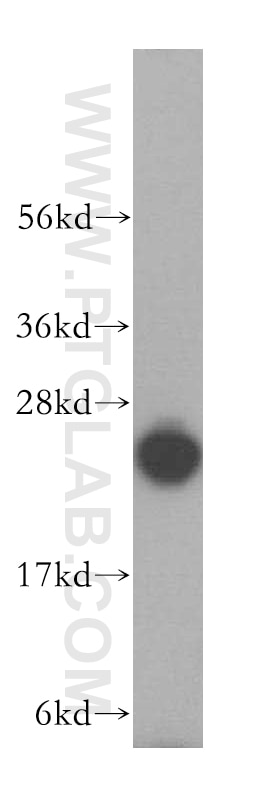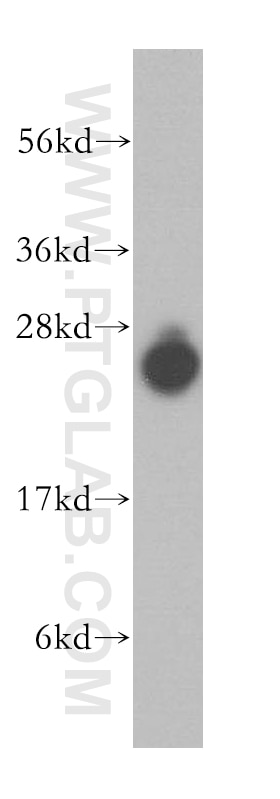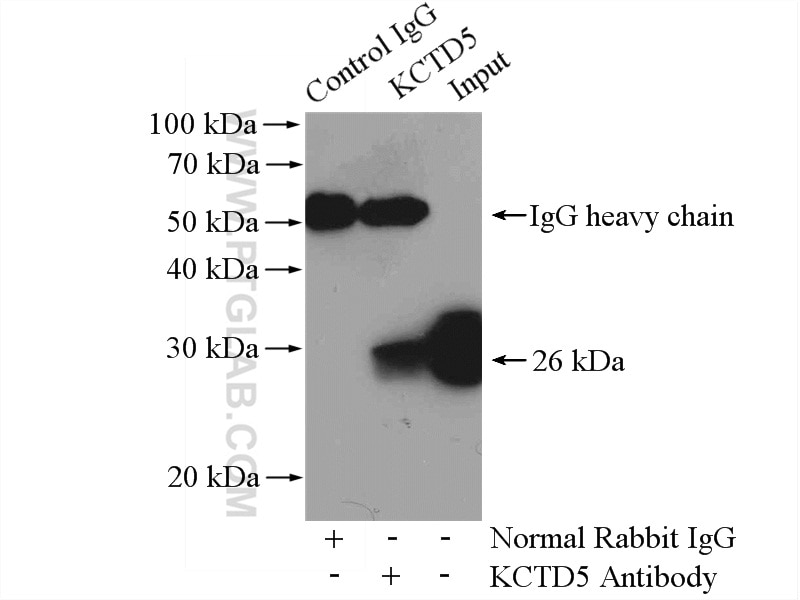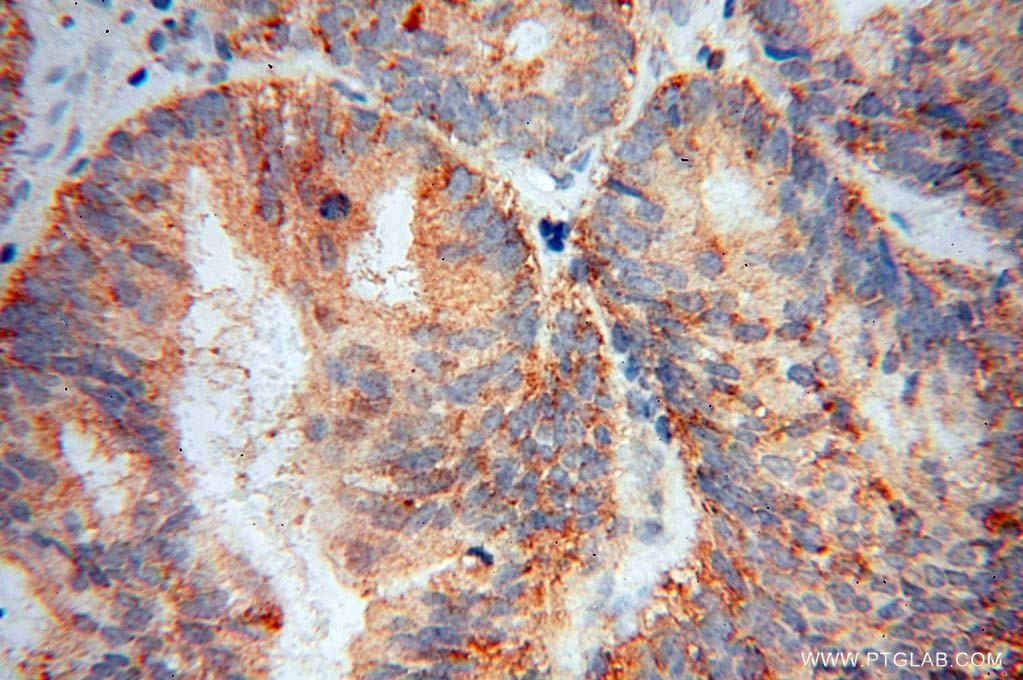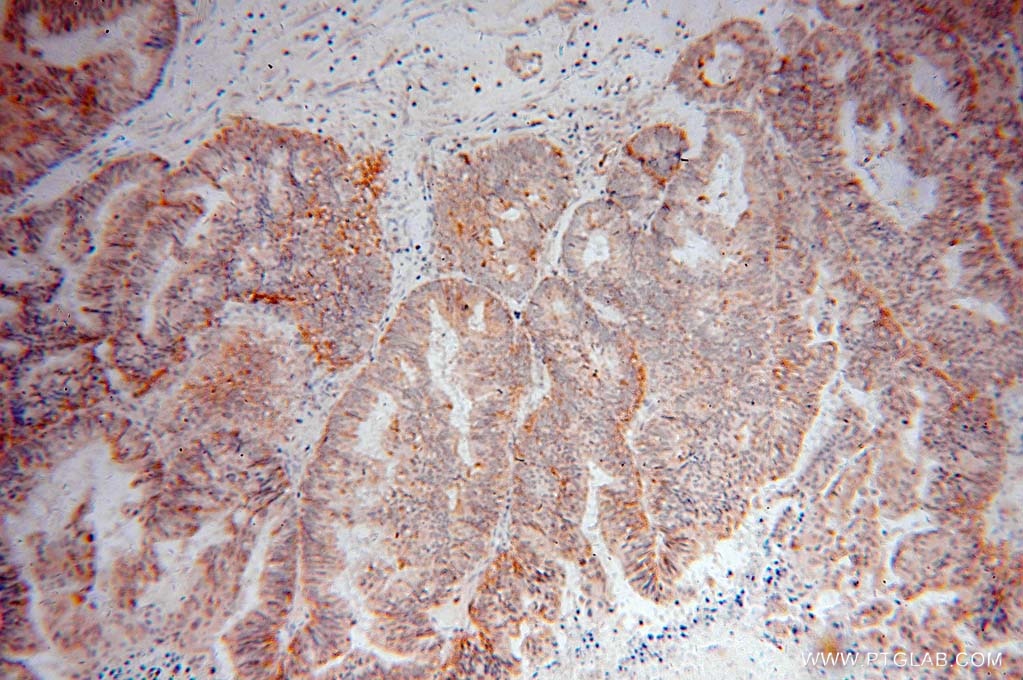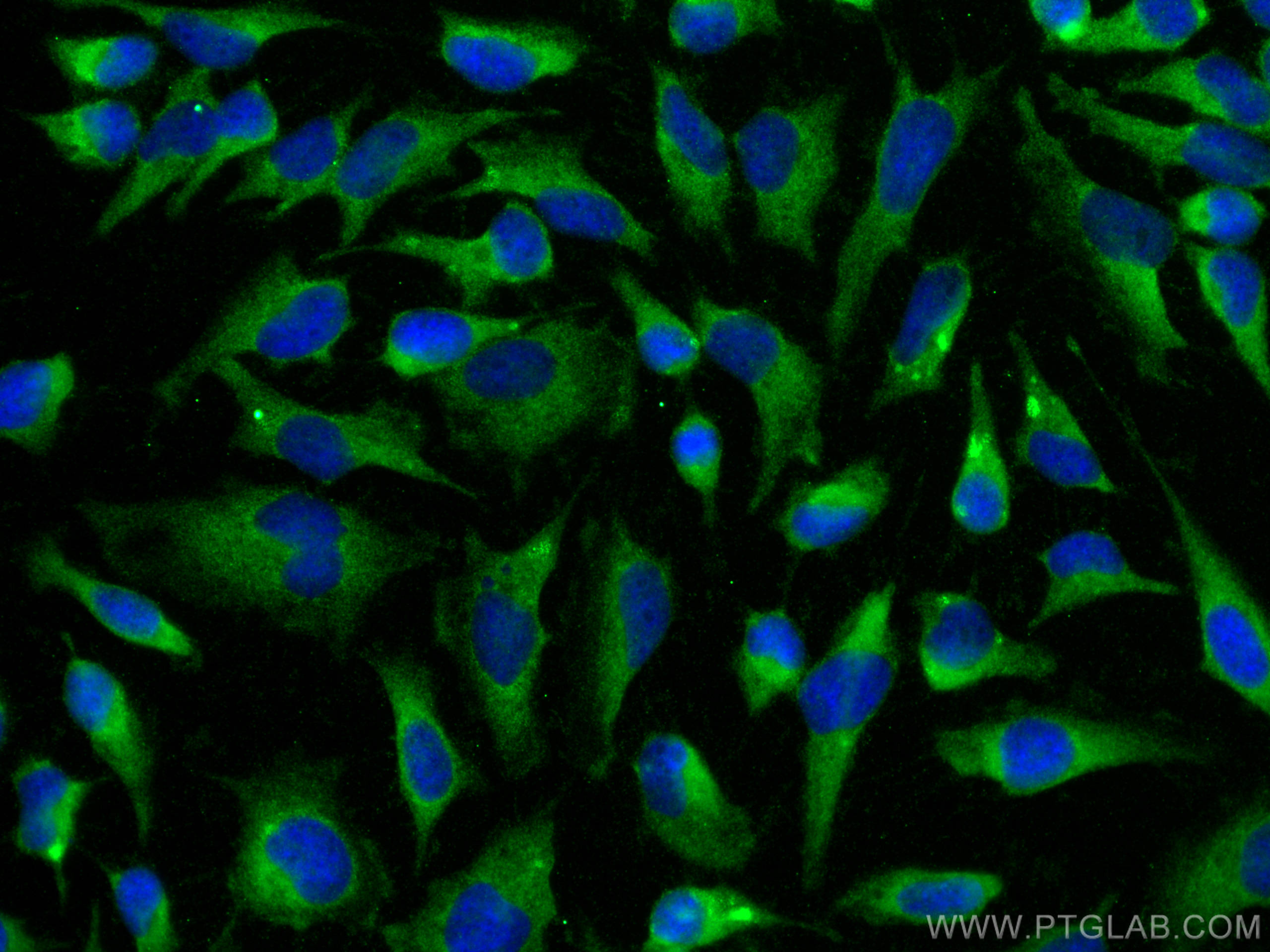- Phare
- Validé par KD/KO
Anticorps Polyclonal de lapin anti-KCTD2/5/17
KCTD2/5/17 Polyclonal Antibody for WB, IP, IF, IHC, ELISA
Hôte / Isotype
Lapin / IgG
Réactivité testée
Humain, rat, souris
Applications
WB, IHC, IF/ICC, IP, ELISA
Conjugaison
Non conjugué
N° de cat : 15553-1-AP
Synonymes
Galerie de données de validation
Applications testées
| Résultats positifs en WB | cellules HeLa, tissu cérébral humain |
| Résultats positifs en IP | cellules HeLa |
| Résultats positifs en IHC | tissu de tumeur ovarienne humain il est suggéré de démasquer l'antigène avec un tampon de TE buffer pH 9.0; (*) À défaut, 'le démasquage de l'antigène peut être 'effectué avec un tampon citrate pH 6,0. |
| Résultats positifs en IF/ICC | cellules HeLa, |
Dilution recommandée
| Application | Dilution |
|---|---|
| Western Blot (WB) | WB : 1:500-1:2000 |
| Immunoprécipitation (IP) | IP : 0.5-4.0 ug for 1.0-3.0 mg of total protein lysate |
| Immunohistochimie (IHC) | IHC : 1:20-1:200 |
| Immunofluorescence (IF)/ICC | IF/ICC : 1:200-1:800 |
| It is recommended that this reagent should be titrated in each testing system to obtain optimal results. | |
| Sample-dependent, check data in validation data gallery | |
Applications publiées
| KD/KO | See 2 publications below |
| WB | See 8 publications below |
| IP | See 1 publications below |
Informations sur le produit
15553-1-AP cible KCTD2/5/17 dans les applications de WB, IHC, IF/ICC, IP, ELISA et montre une réactivité avec des échantillons Humain, rat, souris
| Réactivité | Humain, rat, souris |
| Réactivité citée | rat, Humain |
| Hôte / Isotype | Lapin / IgG |
| Clonalité | Polyclonal |
| Type | Anticorps |
| Immunogène | KCTD2/5/17 Protéine recombinante Ag7915 |
| Nom complet | potassium channel tetramerisation domain containing 5 |
| Masse moléculaire calculée | 26 kDa |
| Poids moléculaire observé | 26 kDa |
| Numéro d’acquisition GenBank | BC007314 |
| Symbole du gène | KCTD5 |
| Identification du gène (NCBI) | 54442 |
| Conjugaison | Non conjugué |
| Forme | Liquide |
| Méthode de purification | Purification par affinité contre l'antigène |
| Tampon de stockage | PBS avec azoture de sodium à 0,02 % et glycérol à 50 % pH 7,3 |
| Conditions de stockage | Stocker à -20°C. Stable pendant un an après l'expédition. L'aliquotage n'est pas nécessaire pour le stockage à -20oC Les 20ul contiennent 0,1% de BSA. |
Informations générales
KCTD5 belongs to the human potassium (K+) channel tetramerization domain (KCTD) family of proteins which share sequence similarity with the cytoplasmic domain of voltage-gated K+ channels (Kv channels). The KCTD proteins have relatively conserved N-terminal domains and variable C-termini (PMID: 24268103). KCTD5 interacts with cullin3 and has been proposed to function as substrate adapter for cullin3 based ubiquitin E3 ligases (PMID: 26188516). This polyclonal antibody raised against full-length recombinant protein of human KCTD5 (26 kDa) can cross-react with other KCTD proteins, including KCTD2 (29 kDa), KCTD17 (33-36 kDa).
Protocole
| Product Specific Protocols | |
|---|---|
| WB protocol for KCTD2/5/17 antibody 15553-1-AP | Download protocol |
| IHC protocol for KCTD2/5/17 antibody 15553-1-AP | Download protocol |
| IF protocol for KCTD2/5/17 antibody 15553-1-AP | Download protocol |
| IP protocol for KCTD2/5/17 antibody 15553-1-AP | Download protocol |
| FC protocol for KCTD2/5/17 antibody 15553-1-AP | Download protocol |
| Standard Protocols | |
|---|---|
| Click here to view our Standard Protocols |
Publications
| Species | Application | Title |
|---|---|---|
Sci Adv Structural basis for the ubiquitination of G protein βγ subunits by KCTD5/Cullin3 E3 ligase | ||
Nat Commun Knowledge graph-based recommendation framework identifies drivers of resistance in EGFR mutant non-small cell lung cancer.
| ||
Elife Genome-wide CRISPR screening reveals genetic modifiers of mutant EGFR dependence in human NSCLC. | ||
PLoS Genet Conserved properties of Drosophila Insomniac link sleep regulation and synaptic function. | ||
Commun Biol Genome-wide CRISPR screens identify the YAP/TEAD axis as a driver of persister cells in EGFR mutant lung cancer |
